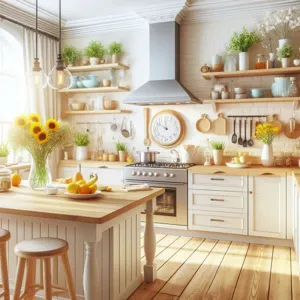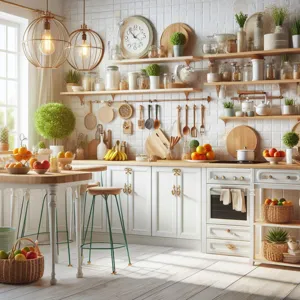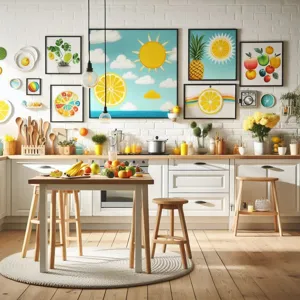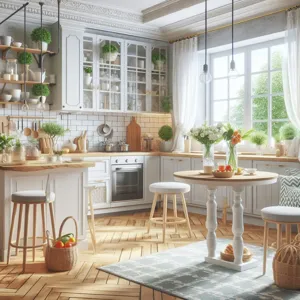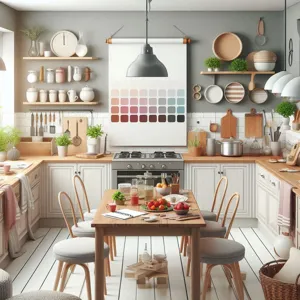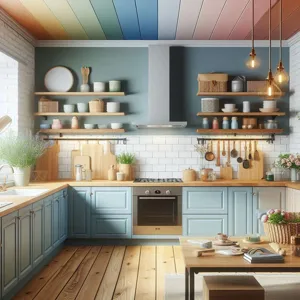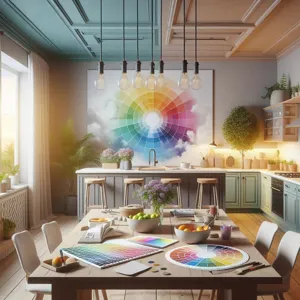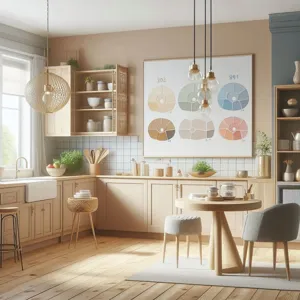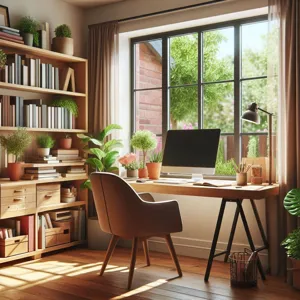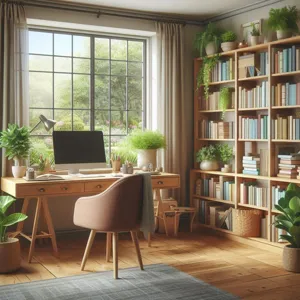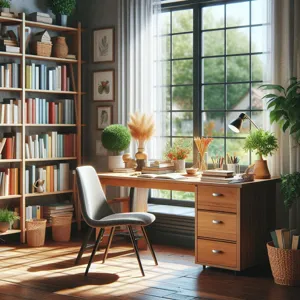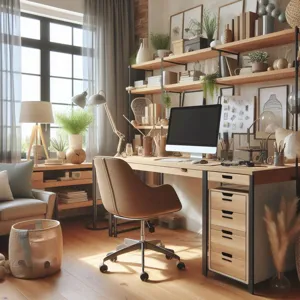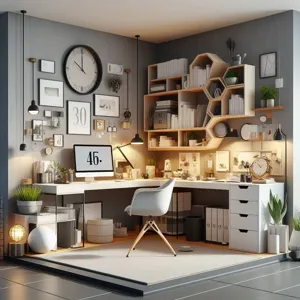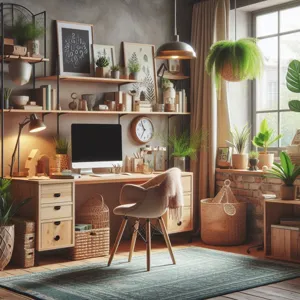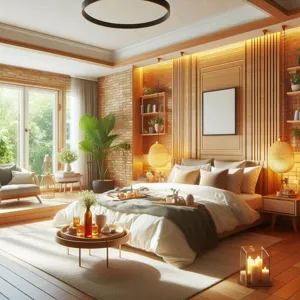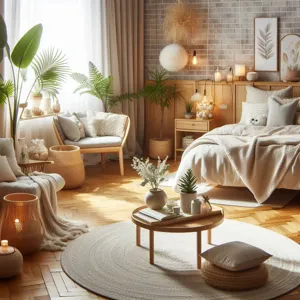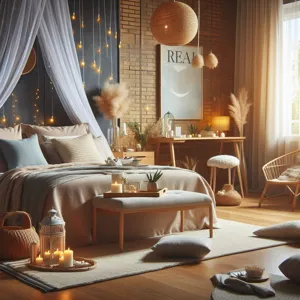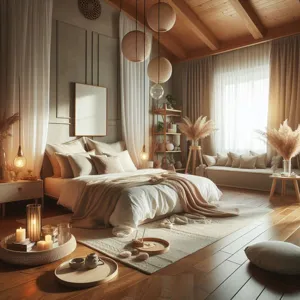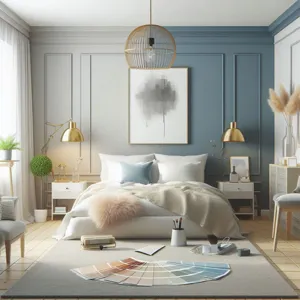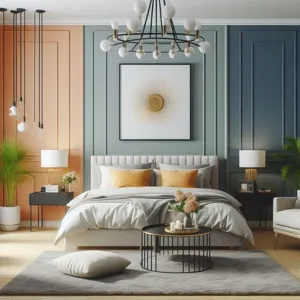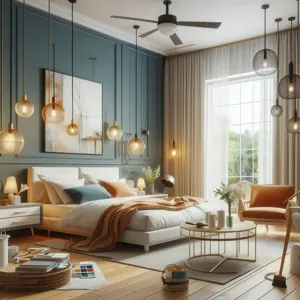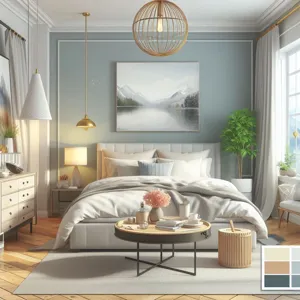In the bustling heart of every home, the kitchen stands as a hub of activity, and at the center of it all is the humble dishwasher—a modern marvel that transforms the tedious chore of washing dishes into a breeze.
But with a plethora of options available, how do you choose the right dishwasher that suits your needs and lifestyle? From the sleek, energy-efficient built-in models to the versatile portable designs, each type comes packed with features that promise to enhance your dishwashing experience. In this comprehensive guide, we will delve into the various types of dishwashers, unravel their unique features, and provide you with the insights needed to make an informed decision. Whether you’re a culinary enthusiast or a busy parent seeking convenience, understanding the ins and outs of dishwashers will empower you to select the perfect appliance that not only complements your kitchen but also streamlines your daily routine. Join us as we navigate the world of dishwashers and help you find the ideal match for your home!
1. Introduction to Dishwashers: Why Choose One?

In today’s fast-paced world, where time is often a luxury, the humble dishwasher has transformed from a mere convenience to an essential household appliance. Imagine the relief of not having to spend precious moments scrubbing pots and pans, only to find yourself facing a mountain of dishes after every meal. With a dishwasher, you can reclaim that time for what truly matters—be it enjoying a leisurely dinner with family or catching up on your favorite shows.
Choosing a dishwasher is not just about selecting an appliance; it’s about enhancing your lifestyle. From energy-efficient models that help reduce your carbon footprint to smart dishwashers equipped with Wi-Fi capabilities for remote operation, the options available today cater to a wide array of needs and preferences. Whether you have a bustling household with a constant stream of dirty dishes or a cozy kitchen for two, there’s a dishwasher designed to fit seamlessly into your routine.
In this guide, we will explore the various types of dishwashers—some built to handle large loads with ease, while others are compact and perfect for smaller kitchens. We will also delve into essential features to consider, such as noise levels, wash cycles, and energy efficiency ratings. By the end of this article, you will not only understand the different options available but also be well-equipped to make an informed decision that perfectly suits your lifestyle and kitchen needs. So, let’s dive in and discover why choosing the right dishwasher can revolutionize your dishwashing experience!
2. Types of Dishwashers: Built-in, Portable, and Drawer Models
When it comes to selecting the right dishwasher for your home, understanding the different types available can significantly impact your decision. Dishwashers come in three main designs: built-in, portable, and drawer models, each catering to distinct needs and lifestyles.
**Built-in Dishwashers** are the most common type found in homes. These units are seamlessly installed under the countertop, providing a permanent solution for dishwashing. They usually come in standard sizes (24 inches is typical) and can hold a substantial amount of dishes, pots, and pans, making them ideal for families or anyone who frequently entertains guests. Built-in models often come equipped with advanced features such as multiple wash cycles, energy-efficient options, and smart technology that allows for remote operation via smartphones.
**Portable Dishwashers** offer a flexible alternative for those who may not have the space or plumbing for a built-in unit. These dishwashers typically sit on wheels, allowing you to move them wherever needed, and can be easily connected to a kitchen faucet when in use. This makes them perfect for renters or smaller kitchens that require versatility. Portable dishwashers generally have a smaller capacity than their built-in counterparts but still get the job done efficiently. With various styles and colors available, they can blend in with your kitchen decor while providing the functionality you need.
**Drawer Dishwashers** are a more modern and innovative option, featuring a unique design that allows for easier loading and unloading. These models consist of one or two separate drawers that can operate independently, making them great for smaller loads or quick clean-ups. Drawer dishwashers are particularly beneficial for those with limited kitchen space, as they can be installed in cabinets or countertops. Additionally, many drawer models come with advanced features like adjustable racks and specialized wash settings for delicate items.
By recognizing the advantages and limitations of each type of dishwasher, you can make an informed decision that aligns with your household needs, kitchen layout, and lifestyle. Whether you opt for the classic built-in, the versatile portable, or the innovative drawer model, choosing the right dishwasher will enhance your kitchen experience and streamline your dishwashing routine.
3. Key Features to Consider When Buying a Dishwasher

When embarking on the journey to choose the perfect dishwasher, understanding the key features available can significantly enhance your decision-making process. Modern dishwashers come packed with a variety of options designed to cater to diverse household needs, making it crucial to identify which features align with your lifestyle and preferences.
**1. Wash Cycles and Options:**
One of the first features to consider is the variety of wash cycles your dishwasher offers. Standard options include heavy, normal, and light cycles, but advanced models may also provide eco-friendly settings, quick wash options, and even specialized cycles for delicate glassware or pots and pans. Having multiple cycles allows you to customize the cleaning process based on your specific load requirements, ensuring that your dishes receive the appropriate care.
**2. Energy Efficiency:**
Energy-efficient dishwashers not only save you money on utility bills but also contribute to environmental sustainability. Look for models with the ENERGY STAR label, which indicates they meet rigorous energy efficiency standards. Additionally, consider features like soil sensors that adjust the wash cycle based on the dirtiness of the dishes, optimizing water and energy usage.
**3. Noise Level:**
For those who value peace and quiet, the noise level of a dishwasher is an essential feature to keep in mind. Measured in decibels (dB), a quieter dishwasher typically operates between 44-50 dB, allowing you to run it during the night or while entertaining guests without disruption. If your kitchen is open to your living space, investing in a quieter model can enhance your overall comfort.
**4. Interior Layout and Capacity:**
The layout of the dishwasher’s interior can greatly impact its usability. Look for adjustable racks, foldable tines, and designated spaces for utensils and larger items. A flexible configuration allows you to maximize capacity and accommodate various dish sizes, from oversized pots to delicate stemware. Assessing your typical load size and shape will help you determine the best interior design for your needs.
**5. Smart Features:**
As technology advances, many dishwashers now come equipped with smart features that can elevate your cleaning experience. Wi-Fi connectivity allows you to monitor and control your dishwasher remotely, receive alerts when cycles are complete, or even run diagnostic tests. Some models are compatible with voice assistants, making it easier to set cycles without lifting a finger.
**6. Build Quality and Design:**
Finally, consider the build quality and design aesthetics of the dishwasher. Stainless steel interiors are not only durable but also resist odors and stains, making them easier to clean. The exterior design should complement your kitchen decor, with options ranging from sleek, modern lines to classic finishes. A well-designed dishwasher can seamlessly integrate into your kitchen while providing lasting performance.
By carefully evaluating these key features, you’ll be well-equipped to select a dishwasher that not only meets your cleaning demands but also enhances your kitchen’s functionality and style. Whether you prioritize efficiency, noise reduction, or advanced technology, understanding these elements will lead you to a choice that keeps your dishes sparkling while fitting seamlessly into your home.
4. Energy Efficiency Ratings: What You Need to Know
When selecting a dishwasher, one of the most critical factors to consider is its energy efficiency rating. Not only does this metric highlight the appliance’s environmental impact, but it can also significantly influence your household utility costs. Dishwashers are assigned an energy efficiency rating based on their energy consumption during typical use, usually represented by the Energy Star label or the Federal Trade Commission (FTC) guidelines.
Energy Star-rated dishwashers, for instance, are designed to use less water and electricity compared to standard models, making them a sustainable choice for eco-conscious consumers. These dishwashers often incorporate advanced technologies, such as soil sensors and smart wash cycles, which optimize water and energy usage based on the load’s specific needs.
When perusing different models, look for the EnergyGuide label, which provides an estimated annual operating cost and energy consumption. This label is a valuable tool for comparing efficiency among various options, allowing you to weigh the potential savings against the initial purchase price.
Beyond just the numbers, consider how features like adjustable spray arms, energy-saving modes, and hybrid drying systems contribute to overall efficiency. Some dishwashers even allow you to run shorter cycles for lightly soiled dishes, minimizing water and energy usage.
By prioritizing energy efficiency, not only will you reduce your environmental footprint, but you’ll also enjoy long-term savings on your energy bills, making it a smart, cost-effective choice for any kitchen. As you navigate through your options, keep these energy efficiency ratings in mind to ensure you select a dishwasher that balances performance with sustainability.
5. Noise Levels and Their Importance in Choosing a Dishwasher

When it comes to selecting the perfect dishwasher for your home, noise levels should be a top consideration. After all, the last thing you want is to invest in a sleek, efficient appliance that disrupts the tranquility of your household with persistent clattering and whirring sounds. Modern dishwashers come with a range of noise levels, typically measured in decibels (dB), and understanding this measurement is crucial for making an informed choice.
Most dishwashers today operate between 40 dB and 60 dB. For reference, a quiet library registers at about 40 dB, while normal conversation can reach around 60 dB. If you have an open-concept living space or your kitchen is adjacent to your living area, opting for a model that operates below 50 dB will ensure a peaceful environment, allowing you to watch TV or have a conversation without raising your voice.
Additionally, many manufacturers now highlight their dishwashers’ noise levels prominently in their specifications, with terms like “ultra-quiet” or “whisper-quiet” often indicating models that operate at the lower end of the scale. Features such as sound insulation and a well-designed motor can contribute significantly to reducing noise levels, so it’s worth considering these aspects when shopping.
Moreover, pay attention to the dishwasher’s cycle types. Some cycles, like the heavy-duty or sanitize settings, may generate more noise due to increased water pressure and longer run times. Understanding when these louder cycles occur can help you plan your dishwashing schedule around them—perhaps running heavier loads at night when the household is quieter.
Ultimately, a dishwasher’s noise level can greatly influence your overall satisfaction with the appliance. By prioritizing this feature in your purchasing decision, you can enjoy the convenience of a dishwasher without the unwelcome distraction of excessive noise, creating a harmonious balance in your home.
6. Size and Capacity: Finding the Right Fit for Your Kitchen
When it comes to selecting the perfect dishwasher for your kitchen, size and capacity are crucial factors that can significantly impact both functionality and convenience. Dishwashers come in a variety of sizes, typically categorized as standard, compact, and portable models, each designed to cater to different kitchen layouts and household needs.
**Standard Size Dishwashers** typically measure around 24 inches wide and are built to accommodate a full load of dishes, making them ideal for larger families or those who frequently entertain guests. These models often offer adjustable racks and flexible loading options, allowing you to maximize their capacity for pots, pans, and tall items. If you find yourself cooking elaborate meals or accumulating a mountain of dishes after a gathering, a standard dishwasher could be your best bet.
On the other hand, **Compact Dishwashers**, generally around 18 inches wide, are designed for smaller kitchens or apartments where space is limited. Despite their size, many compact models don’t compromise on performance, offering efficient cleaning cycles and energy-saving features. They typically hold fewer dishes than standard models but can still handle everyday needs for singles or couples.
For those who are short on space but still want the convenience of a dishwasher, **Portable Dishwashers** may be the solution. These units can be wheeled into place and connected to the kitchen sink when needed, providing flexibility without the commitment of a permanent installation. Perfect for renters or anyone who is not ready for a full kitchen remodel, portable dishwashers come in various sizes and designs to suit any style.
In addition to the physical size, consider the **capacity** of the dishwasher. Most models list their capacity in terms of place settings, which is the standard measure of how many dishes, glasses, and utensils can be washed in one cycle. A typical standard-sized dishwasher holds about 12 to 16 place settings, while compact models usually accommodate 6 to 8. Choose a capacity that aligns with your household’s dishwashing habits—overestimating your needs can lead to a machine that’s underused, while underestimating can leave you washing dishes by hand more often than you’d like.
Ultimately, the right dishwasher for your kitchen is one that fits both your space and your lifestyle. Take the time to measure your available space, consider the size of your household, and think about how often you cook and entertain. By doing so, you’ll ensure that your new dishwasher not only fits seamlessly into your kitchen but also meets your dishwashing demands effectively.
7. Wash Cycle Options: Understanding Different Settings

When selecting a dishwasher, one of the most critical aspects to consider is the variety of wash cycle options available. These settings not only define how effectively your dishes will be cleaned but also enhance the appliance’s efficiency by allowing you to customize the wash according to your specific needs. Understanding these different settings can significantly impact your dishwashing experience and help you maintain optimal performance.
1. **Normal Cycle**: This is the standard setting most commonly used for everyday loads. It typically uses moderate water pressure and heat, making it suitable for a mix of lightly soiled and moderately dirty dishes. This cycle is perfect for day-to-day cleaning, ensuring your plates, utensils, and glasses come out sparkling without excessive energy use.
2. **Heavy Duty / Pots and Pans Cycle**: Designed for those stubborn, baked-on messes, this cycle employs higher water temperatures and extended wash times. It’s ideal for cleaning cookware, such as pots and pans, that require a little more elbow grease. If you frequently entertain or cook large meals, this setting will become one of your best friends in the kitchen.
3. **Quick Wash / Express Cycle**: For those times when you need clean dishes in a hurry, the quick wash cycle is a lifesaver. It significantly reduces the wash time, making it perfect for lightly soiled items or when you have a small load. However, it’s important to note that while convenient, this setting may not offer the thoroughness of a normal cycle.
4. **Eco Mode**: As sustainability becomes a priority for many households, the eco mode has gained popularity. This setting uses less water and energy by extending the wash duration and lowering the temperature. If you want to minimize your environmental footprint while still achieving clean dishes, this is the option for you.
5. **Sanitize Cycle**: If you’re particularly concerned about germs and bacteria, the sanitize cycle is a must-have feature. This setting raises the water temperature to a level that kills harmful microorganisms, making it an excellent choice for cleaning baby bottles, cutting boards, and other items that require thorough sanitization.
6. **Glassware Cycle**: Delicate items like wine glasses and crystal require special care to avoid chipping or breaking. The glassware cycle typically uses gentler water pressure and lower temperatures to protect these fragile pieces while still providing effective cleaning.
7. **Self-Cleaning Cycle**: While not a wash cycle for your dishes, this feature is worth mentioning. A self-cleaning cycle helps maintain the dishwasher itself by using high heat to eliminate built-up grime and odor, ensuring that your appliance runs efficiently and extends its lifespan.
In summary, understanding the wash cycle options available on your dishwasher can enhance your cleaning efficiency and ensure that your dishes are always spotless. By selecting the right cycle for your specific needs, you’ll not only save time and energy but also prolong the life of your dishware and your appliance. Consider your dishwashing habits and the types of items you frequently clean to choose the perfect dishwasher settings for your household.
8. Smart Technology: The Benefits of Smart Dishwashers
In the age of smart homes, dishwashers have evolved far beyond their traditional roles, thanks to the advent of smart technology. Smart dishwashers come equipped with innovative features that not only streamline the dishwashing process but also enhance convenience and efficiency. Imagine being able to control your dishwasher from your smartphone, allowing you to start or pause a cycle while you’re out grocery shopping or even at work.
One of the most significant benefits of smart dishwashers is their ability to connect to Wi-Fi, enabling you to receive alerts and notifications directly to your mobile device. This means you’ll know exactly when your dishes are clean and ready to be unloaded, eliminating the guesswork often associated with traditional models. Many smart dishwashers also offer diagnostic features that can alert you to potential issues before they become major problems, saving you time and repair costs down the line.
Additionally, smart dishwashers often include advanced sensors that optimize water and energy usage based on the load size and soil level of your dishes. This not only reduces your utility bills but also contributes to a more environmentally friendly home. Some models even allow you to customize wash cycles and settings through a dedicated app, so you can easily select the best program for your specific needs—whether that’s a quick wash for lightly soiled plates or a more intensive cycle for baked-on grime.
Moreover, many smart dishwashers come with integration features that allow them to work seamlessly with other smart home devices. For instance, you can set your dishwasher to run while you’re away, or sync it with your smart speaker to receive updates on its cycle status. With voice control capabilities, you can simply ask your smart assistant when it will be finished, ensuring that dishwashing fits effortlessly into your busy schedule.
In summary, investing in a smart dishwasher can transform your kitchen experience. With convenience, efficiency, and advanced technology at your fingertips, you can enjoy sparkling clean dishes without the hassle. As you evaluate your options, consider how these features can fit into your lifestyle and help you make an informed decision that will keep your kitchen running smoothly.
9. Interior Design: Racks, Tines, and Loading Flexibility
When it comes to choosing the right dishwasher, the interior design is just as crucial as the exterior finish. A well-thought-out interior layout can significantly enhance your dishwashing experience, making it easier and more efficient to load and unload your dishes.
First and foremost, consider the configuration of the racks and tines. Most modern dishwashers come equipped with adjustable racks, which allow you to customize the space according to your needs. This flexibility is particularly beneficial if you frequently wash larger items, such as pots and pans, or if you have a collection of delicate glassware that requires special handling. Some models even feature a third rack, which provides additional space for utensils and smaller items, maximizing every inch of available loading space.
The tines—the prongs that hold your dishes in place—also play a significant role in how effectively you can load your dishwasher. Look for models with fold-down tines that can be manipulated to accommodate awkwardly shaped items. This added versatility can make a world of difference when you’re trying to fit a variety of dishes in one load. Some dishwashers offer tines that are adjustable in height, allowing you to create more room for larger items without sacrificing the ability to wash smaller ones.
Another important aspect of interior design is the layout of the spray arms. A well-designed dishwasher will have multiple spray arms that reach every corner of the machine. This ensures that every dish is thoroughly cleaned, no matter where it’s placed inside the unit. Additionally, look for models that offer targeted spray zones, which provide extra cleaning power for heavily soiled dishes.
Ultimately, the right combination of racks, tines, and loading flexibility can not only simplify the process of loading and unloading your dishwasher but also enhance the overall effectiveness of the cleaning cycle. By prioritizing these features, you can choose a dishwasher that seamlessly fits into your kitchen routine, saving you time and effort after every meal.
10. Maintenance and Cleaning: What to Look For
When selecting a dishwasher, maintenance and cleaning should be at the forefront of your decision-making process. A dishwasher is an investment, and keeping it running efficiently requires a bit of attention. Therefore, understanding the maintenance requirements and ease of cleaning will save you time and headaches in the long run.
First, consider the interior design of the dishwasher. Models with stainless steel interiors are not only aesthetically pleasing, but they are also more resistant to stains and odors compared to plastic interiors. Stainless steel is easier to wipe down and is less likely to harbor bacteria, making it a hygienic choice.
Next, pay attention to the filter system. A dishwasher with a self-cleaning filter can save you the hassle of manually cleaning out food debris, which can accumulate and cause unpleasant odors or clogs. However, if you opt for a model with a manual filter, ensure it is easily accessible; a removable filter that can be quickly rinsed under running water will encourage regular maintenance.
Look for features that simplify cleaning, such as smooth racks and spray arms. Racks that can be adjusted or removed make cleaning the interior easier and allow you to fit larger items without obstruction. Additionally, spray arms that are easy to detach can facilitate thorough cleaning, ensuring that every nook and cranny of your dishwasher remains free from grime.
Don’t overlook the importance of user-friendly controls and indicators. A dishwasher with a clear, intuitive interface will help you identify when it’s time to clean the filter or run a maintenance cycle. Some modern dishwashers even feature self-diagnostic tools that alert you to potential issues before they become significant problems.
Finally, consider the noise level during operation. A quieter model not only makes for a more pleasant kitchen environment but also encourages you to run it more frequently without feeling like you’re disrupting your home. Look for dishwashers with sound insulation and a decibel level rating that suits your lifestyle.
In summary, when choosing your dishwasher, pay close attention to its maintenance and cleaning features. A model designed for easy upkeep will enhance your kitchen experience, ensuring that your investment remains in top-notch condition for years to come.
11. Price Range: Budgeting for Your Dishwasher Purchase
When it comes to choosing a dishwasher, understanding the price range is crucial to making a sound investment. Dishwashers can vary significantly in cost, from budget-friendly models to high-end machines laden with advanced features. Setting a budget beforehand will help streamline your options and ensure that you find a dishwasher that meets both your needs and financial constraints.
At the lower end of the spectrum, you’ll find basic models that typically range from $300 to $600. These dishwashers often focus on essential cleaning functions and may lack some of the bells and whistles that enhance convenience and efficiency. However, don’t underestimate these budget options; they can still deliver reliable performance for everyday dishwashing tasks.
Mid-range dishwashers, priced between $600 and $1,200, often come equipped with additional features such as multiple wash cycles, improved energy efficiency, and quieter operation. These models strike a balance between functionality and affordability, making them a popular choice for many households looking for a bit more sophistication without breaking the bank.
If you’re in the market for a high-end dishwasher, expect to invest $1,200 and up. These premium models boast advanced technology like smart connectivity, customizable wash cycles, and superior energy efficiency. They often come with sleek designs and premium materials that not only enhance their performance but also elevate the aesthetic of your kitchen. For those who frequently entertain or have larger families, the investment in a high-quality dishwasher can be well worth it, as it saves time and offers exceptional cleaning power.
As you consider your budget, also factor in potential long-term savings. Investing in a more efficient model may lead to lower utility bills over time, making certain higher-priced dishwashers more economical in the long run. Remember, whether you’re opting for a basic model or a top-of-the-line machine, careful budgeting will help you choose the right dishwasher that fits your lifestyle and ensures your dishes are always sparkling clean.
12. Brand Reputation: Which Brands Stand Out?
When it comes to choosing the right dishwasher, brand reputation can play a significant role in your decision-making process. A well-established brand often signifies reliability, quality, and customer support, all of which are crucial for such an essential kitchen appliance. With so many options available, it’s important to consider which brands stand out in the crowded market and what they bring to the table.
**Bosch** is consistently lauded for its innovative engineering and quiet operation. Renowned for their sleek designs and energy-efficient models, Bosch dishwashers often come equipped with advanced features like the MyWay rack system and the EasyGlide system for smooth loading and unloading. Their commitment to quality and performance has earned them a loyal customer base.
**KitchenAid** is another brand that shines in the realm of dishwashing. Known for their robust build and high-performance cleaning capabilities, KitchenAid dishwashers are a favorite among home chefs. Features like the ProWash cycle adjust the wash settings based on the soil level, ensuring your dishes receive the perfect clean every time. Additionally, their stylish designs often complement high-end kitchen aesthetics.
If you’re looking for value without sacrificing quality, **Whirlpool** might be the brand for you. Their dishwashers are celebrated for their straightforward functionality and durability. With options that range from budget-friendly to more advanced models, Whirlpool caters to a wide audience without compromising on cleaning power or efficiency.
**Miele**, a luxury brand, deserves mention for their commitment to longevity and excellence. With a reputation for being built to last, Miele dishwashers often come with advanced features such as the innovative AutoOpen drying function and impressive energy efficiency ratings. Though they come with a higher price tag, many users find the investment worthwhile due to their exceptional performance and durability.
Finally, **Samsung** has made a name for itself with its modern, tech-savvy dishwashers that offer smart features and connectivity. Their models often include options like the WaterWall technology for thorough cleaning and Wi-Fi connectivity for remote monitoring and control. This brand appeals to tech enthusiasts who appreciate the integration of smart home capabilities in their kitchen appliances.
When selecting a dishwasher, consider the reputation of these brands along with your specific needs and preferences. Research customer reviews and ratings to gain insight into the reliability and performance of different models. A reputable brand can provide not only a quality product but also peace of mind, ensuring that your investment is protected for years to come.
13. Customer Reviews: How to Use Feedback in Your Decision
When it comes to choosing the right dishwasher, customer reviews can be an invaluable resource in your decision-making process. These insights come directly from individuals who have used the products in real-life situations, offering a wealth of information that specifications alone cannot provide.
Start by searching for reviews on trusted retail websites, appliance forums, and social media platforms. Pay attention to both the positive and negative feedback—while a glowing review can point out the strengths of a model, critical comments often highlight potential shortcomings that you might not have considered.
Look for common themes in the reviews. Is there a recurring issue with noise levels? Are customers consistently praising the energy efficiency? Do several users mention that a particular brand offers exceptional customer service? These patterns can help you gauge whether a specific model will meet your needs.
Additionally, consider the context of the reviews. A dishwasher that works perfectly for a family of four may not be the best choice for a single-person household, and vice versa. Take note of the reviewer’s circumstances and how they align with your lifestyle and usage habits.
Also, don’t overlook the importance of verified purchase reviews. Many platforms label reviews from verified buyers, which can add a level of authenticity to the feedback you’re reading. This distinction helps ensure that you’re relying on opinions from actual users rather than fictitious accounts.
Lastly, engage with customer feedback by asking questions on forums or social media. Reach out to users who have reviewed the product to get a more nuanced understanding of their experiences. This proactive approach can provide you with a clearer picture of which dishwasher will truly suit your needs, ensuring that your final decision is informed, confident, and tailored to your home.
14. Conclusion: Making an Informed Choice for Your Kitchen
Choosing the right dishwasher for your kitchen is more than just a matter of preference; it’s an investment that can significantly enhance your daily routine and overall kitchen efficiency. As we’ve explored throughout this guide, the landscape of dishwashers is diverse, ranging from compact models perfect for small spaces to spacious, high-capacity machines designed for large households. Each type comes with its own set of features, such as energy efficiency ratings, noise levels, wash cycles, and smart technology integration, all of which can impact your decision.
In conclusion, making an informed choice requires careful consideration of your specific needs—think about the size of your family, your cooking habits, and your kitchen layout. Are you someone who frequently hosts gatherings and needs a machine that can handle heavy loads? Or perhaps you live alone and would benefit from a compact model that saves space without sacrificing performance?
Don’t forget to factor in the long-term costs associated with energy use and maintenance. While it may be tempting to opt for the cheapest model available, investing in a reliable, energy-efficient dishwasher can save you money in the long run. Additionally, consider the aesthetic and functional aspects of your kitchen design and how a new dishwasher can complement your existing appliances.
Ultimately, the right dishwasher should seamlessly integrate into your lifestyle, making cleanup a breeze and giving you more time to enjoy the moments that matter. By weighing the features discussed in this guide and aligning them with your personal preferences, you’ll be well on your way to choosing a dishwasher that not only meets your needs but also enhances the heart of your home. Happy dishwashing!
15. Frequently Asked Questions About Dishwashers
When embarking on the journey to choose the right dishwasher, you may find yourself grappling with a multitude of questions. Understanding these common queries can help demystify the selection process and ensure that you invest in a machine that suits your needs perfectly. Here are some frequently asked questions that often arise:
**1. What are the different types of dishwashers?**
Dishwashers come in various forms, including built-in, portable, and countertop models. Built-in dishwashers are installed under the counter and are the most common type, while portable dishwashers can be moved and connected to a faucet when needed. Countertop models are compact and ideal for smaller kitchens or limited spaces.
**2. How do I determine the right size for my dishwasher?**
Size is crucial for both functionality and space. Most full-sized dishwashers are 24 inches wide and can accommodate around 12 to 16 place settings. If space is limited, consider compact models, which are typically 18 inches wide and suitable for smaller households.
**3. What features should I look for?**
Key features can significantly enhance your dishwashing experience. Look for options like adjustable racks, multiple wash cycles, energy efficiency ratings (like ENERGY STAR certification), noise levels (measured in decibels), and drying options. Smart technology features are also becoming increasingly popular, allowing you to control your dishwasher remotely or receive alerts when your dishes are clean.
**4. How much water and energy do dishwashers use?**
Modern dishwashers are designed to be both water and energy-efficient. On average, a standard dishwasher uses about 3 to 5 gallons of water per cycle, whereas older models may consume up to 10 gallons. For energy usage, check the energy guide label to compare models and choose one that minimizes your utility costs.
**5. Do I really need to pre-rinse my dishes?**
This is a common misconception! Most modern dishwashers are equipped to handle food residues without pre-rinsing. However, it’s best to scrape off large food particles, as they can clog the filter and affect performance. Simply loading your dirty dishes directly into the dishwasher can save you time and water.
By addressing these frequently asked questions, you’ll be better equipped to make an informed decision when selecting the dishwasher that best fits your lifestyle and kitchen needs. Whether you prioritize size, features, or energy efficiency, understanding your options can lead you to the perfect machine that will make dishwashing a breeze for years to come.
In conclusion, selecting the right dishwasher for your home doesn’t have to be a daunting task. With the insights we’ve shared in this guide, you’re now equipped to navigate the myriad of options available, whether you’re drawn to the energy efficiency of a front-loader or the convenience of a portable model. By understanding the various types and features—from wash cycles and noise levels to smart technology and size considerations—you can make an informed decision that perfectly aligns with your kitchen needs and lifestyle. Remember, investing in a dishwasher is not just about convenience; it’s about enhancing your daily routine and creating a more efficient home. Happy dishwashing, and may your choice bring you years of sparkling clean dishes and joy in your kitchen!





